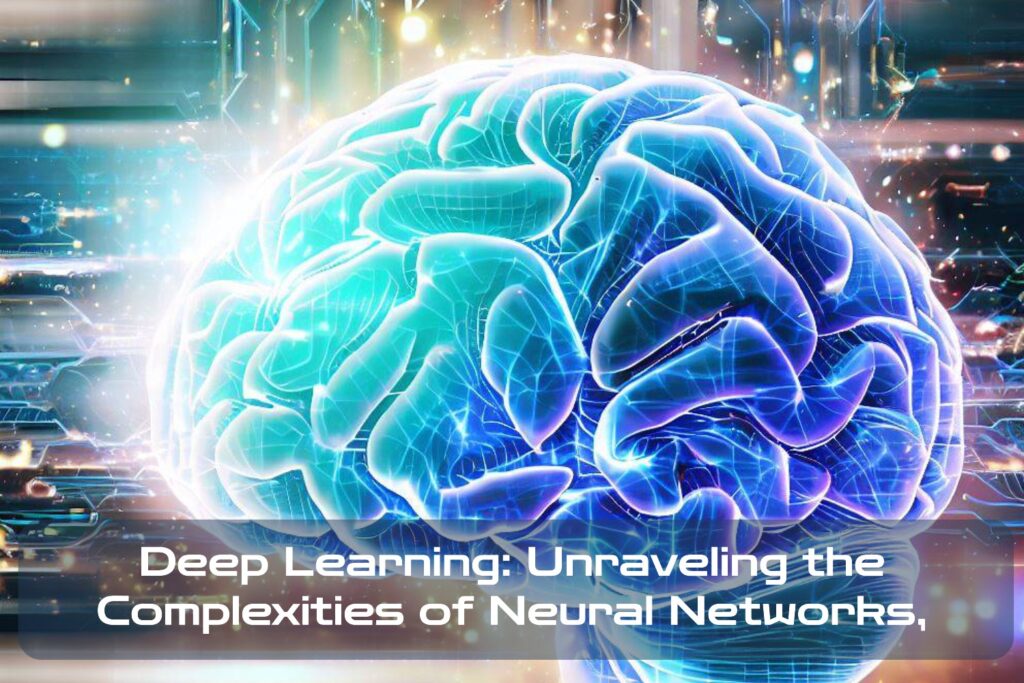Deep Learning has been making breakthroughs in a wide range of fields recently and is changing the way we approach complex problems. It is a subfield of machine learning that involves training artificial neural networks to recognize patterns in data, making it possible for machines to learn from experience.
Neural networks are computational models inspired by the structure and function of biological neurons found in the human brain. With its ability to handle large datasets and make accurate predictions, deep learning is now being used in various industries, such as healthcare, finance, and entertainment.
Definition of deep learning and neural networks
Editor’s Note: As we journey through this article together, I’ve gently woven in some illustrative analogies and easy-to-understand explanations here and there. This approach is especially designed for those who might find some of the terminology a bit alien. But don’t worry, with a little bit of guidance, you’ll find it’s not as daunting as it may seem at first. Trust me, we’ll crack this language together…
Deep Learning refers to using neural networks with multiple layers to model high-level abstractions in data. Its architecture can consist of several layers, but at its core, it is made up of an
- input layer,
- one or more hidden layers,
- and an output layer.
Each neuron in these layers performs a specific calculation on its input before passing the output along to other neurons.
The more hidden layers there are, the more complex the model becomes.
Artificial Neural Networks (ANNs) are inspired by biological neurons, where information processing occurs through connections between synaptic gaps.
ANNs involve a series of mathematical operations that manipulate numerical data, which allows them to learn useful patterns from the data through training processes. They can be used for
- classification (predicting categories)
- or regression (predicting numerical values).
Importance and relevance of deep learning in today’s world
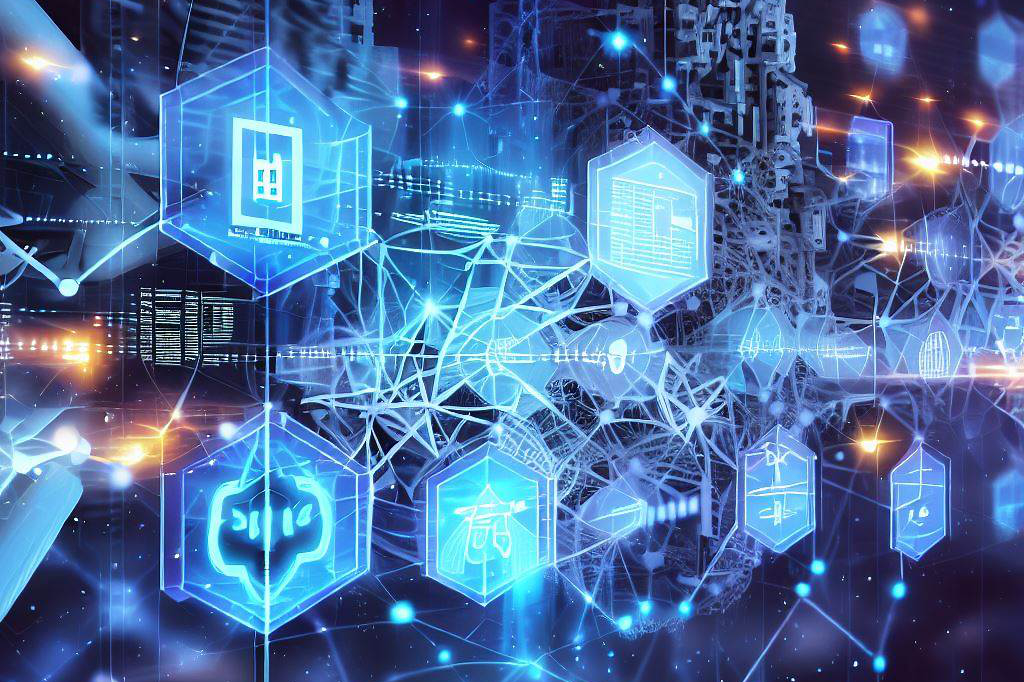
With ubiquitous access to powerful computing resources and big data sets, Deep learning provides us with the power to make sense of huge amounts of unstructured or semi-structured data like
- images,
- videos
- or natural language audio recordings etc.,
making it easy for humans at any level who have access to high-speed internet connections to not need to be experts on analytics techniques.
Deep learning models have been successfully applied in various fields, including medical research, finance, entertainment, and natural language processing. In healthcare, deep learning is being used for disease diagnosis and personalized treatment recommendations.
Financial institutions use it to detect fraud by analyzing large volumes of transaction data.
In the entertainment industry, it is used to analyze viewer preferences and make content recommendations.
Deep Learning has brought about significant changes in the way we approach complex problems and has revolutionized many industries. With its ability to handle large datasets and make accurate predictions, deep learning is becoming a key technology driving innovation across many domains today.
The Basics of Neural Networks
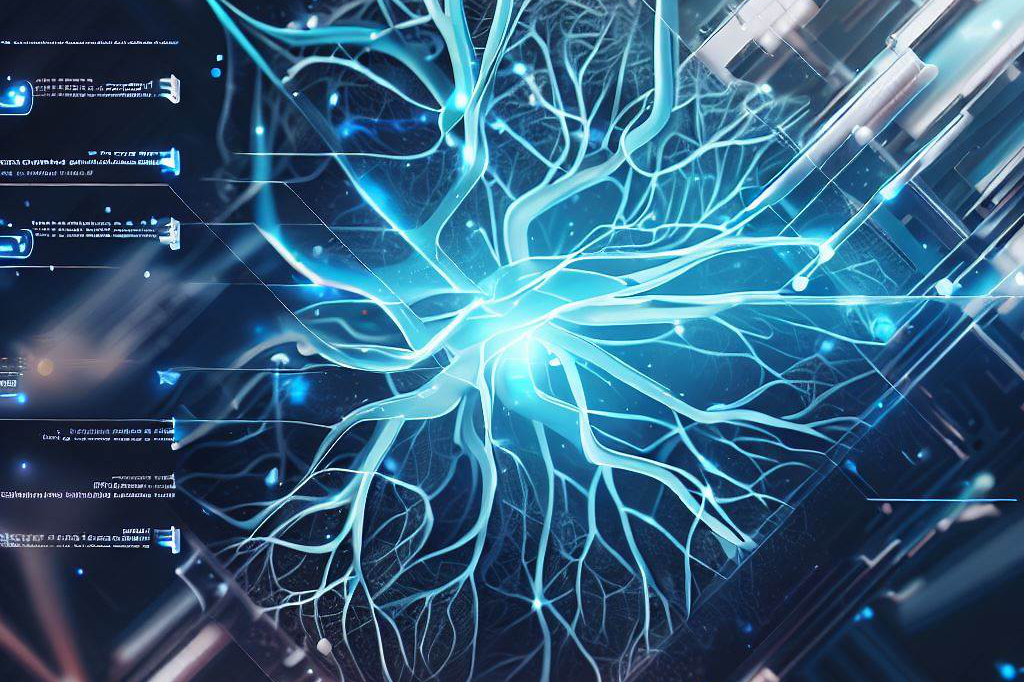
Neural networks are the backbone of deep learning, and it is crucial to understand their structure and function before diving into the intricacies of deep learning. A neural network consists of interconnected nodes, which are also known as neurons.
These neurons receive input signals, process them, and then produce an output signal. The input signals can come from various sources, such as sensors or other neurons in the network.
Structure and Function of a Single Neuron
A single neuron consists of three parts:
- dendrites,
- a cell body (also known as a soma),
- and an axon.
Dendrites receive input signals from other neurons or external sources and propagate them towards the soma.
The soma integrates these signals into one output signal.
The axon transmits this output signal to other neurons in the network or external systems.
The strength of the signal received by a neuron is determined by weights associated with each input signal.
These weights can be adjusted during training to enable better performance on specific tasks. Additionally, each neuron has a bias term that determines its responsiveness to incoming signals.
For those without a background in this, a simplified version is:
Imagine a brain cell, or ‘neuron’, is like a tiny computer in your brain. It has three main parts:
- ‘Dendrites’ – These are like the computer’s antennas, picking up messages from other brain cells or from outside the brain. They send these messages to the main part of the cell.
- ‘Cell body’ or ‘soma’ – This is like the computer’s central processor. It takes all the messages from the dendrites and combines them into one main message.
- ‘Axon’ – This is like the computer’s transmitter. It sends the main message from the cell body to other brain cells or outside the brain.
Just like a computer, a brain cell needs to decide how important each message is. It does this with something called ‘weights’. The weights help the cell decide how much attention to pay to each message it gets.
And, just like training a dog, you can train these cells to get better at doing specific things. You do this by adjusting the weights. The more you train them, the better they get.
Each brain cell also has a ‘bias’. This is like the cell’s mood. It affects how easily the cell gets excited by the messages it’s receiving.
Types of Neural Networks (Feedforward, Recurrent, Convolutional)
There are several types of neural networks used in deep learning applications.
One type is feedforward neural networks (FFNNs), where information flows only in one direction – from input to output layers – with no feedback loops present between layers.
Recurrent neural networks (RNNs), on the other hand, allow for feedback loops between layers, enabling them to handle sequential data such as speech or text more effectively than FFNNs.
Convolutional neural networks (CNNs) are particularly useful for image recognition tasks due to their ability to extract relevant features from images through convolutional operations applied across multiple layers.
For those who appreciate the more analogous explanation:
- ‘Feedforward neural networks’ (FFNNs) are like a one-way street. They start at the beginning, or ‘input’, and move straight through to the end, or ‘output’. They don’t turn around or go back to earlier parts.
- ‘Recurrent neural networks’ (RNNs) are more like a roundabout. They can go around and around, using the same information over and over. This is really helpful for understanding things that come in a sequence, like words in a sentence or sounds in speech.
- ‘Convolutional neural networks’ (CNNs) are great at picking out important details in pictures. They’re like a detective with a magnifying glass, examining each part of the image in layers to find the most important features. This makes them really good at tasks like recognizing faces in photos.
Activation Functions and Their Role in Neural Networks
Activation functions are used to introduce non-linearity into neural networks, allowing them to represent complex functions efficiently. Commonly used activation functions include
- sigmoid,
- tanh,
- and ReLU (rectified linear unit).
Each activation function has its strengths and weaknesses in different contexts.
The sigmoid function maps any input value to a range between 0 and 1.
This makes it useful for binary classification problems where the output should be either 0 or 1.
The tanh function maps any input value to a range between -1 and 1, making it useful for regression problems where the output can be both positive and negative.
The ReLU function sets all negative input values to zero, allowing the network to learn features more efficiently by removing unnecessary noise from the data.
Or perhaps more palatably:
‘Sigmoid function’ – Think of this like a switch that can only be on or off. It takes any information and decides if it should be a 0 (off) or a 1 (on). This is really helpful when you need a yes-or-no answer.
‘Tanh function’ – This is more like a dimmer switch. It can take any information and give an answer anywhere between -1 and 1. This means it can give negative and positive answers, not just on or off.
‘ReLU function’ – This one is like a noise filter. If you give it negative information, it just turns it into 0. This helps the computer focus on the important stuff and ignore the rest. It’s like removing static noise from a radio channel so you can hear the music clearly.
Overall, understanding the basics of neural networks is essential for anyone looking to dive into deep learning. The structure of neurons and their connections, as well as the different types of neural networks and activation functions used within them, form the foundation upon which more complex deep learning models are built.
Training Neural Networks
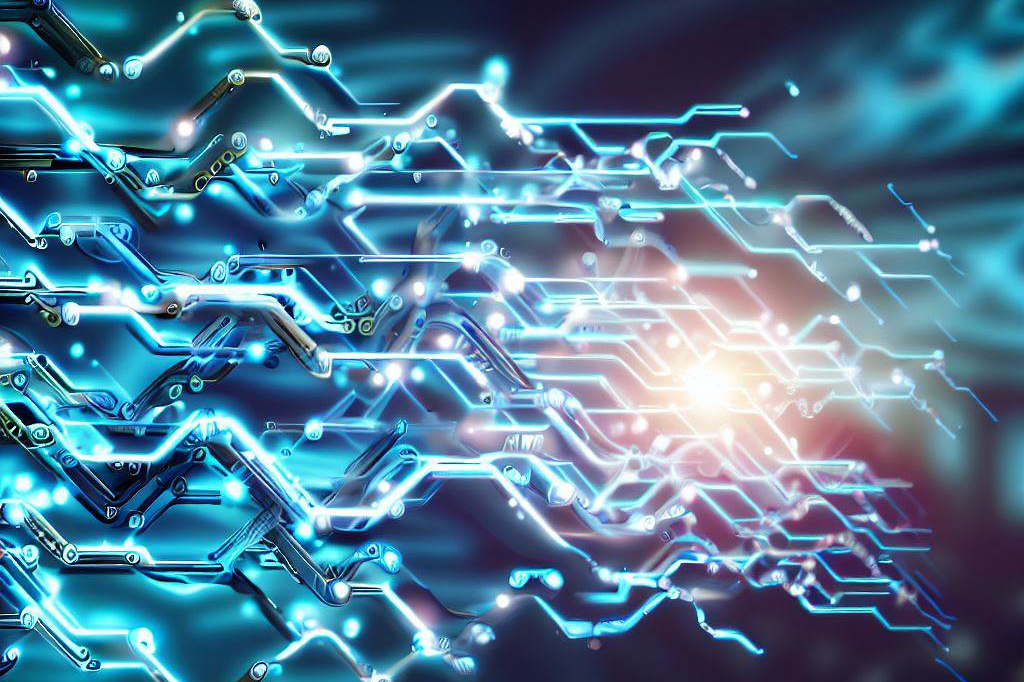
Backpropagation Algorithm: Learning from Errors
Training a neural network involves adjusting its weights and biases so that it produces the desired output for a given input.
The backpropagation algorithm is a supervised learning technique that uses a gradient-based optimization method to adjust the weights and biases of the network. It works by propagating the error observed at the output layer back through the entire network, calculating the gradients of these errors with respect to each weight and bias, and then adjusting them accordingly.
The backpropagation algorithm is widely used in deep learning because it can train networks with many layers, allowing them to learn complex representations of data.
However, it can suffer from vanishing or exploding gradients, where gradients become too small or large during training, respectively.
This can slow down or halt learning altogether. To combat this issue, researchers have developed techniques such as batch normalization and residual connections that stabilize gradient flow.
Gradient Descent Optimization: Finding the Best Path
Once we have calculated gradients for all weights and biases using backpropagation, we need to update them in order to minimize our cost function. Gradient descent is an iterative optimization algorithm that does just this.
It works by taking small steps in the direction opposite to the gradient until we reach a local minimum of our cost function. There are several variations of gradient descent optimization, such as stochastic gradient descent (SGD), mini-batch SGD, and Adam optimization, which attempt to improve convergence speed or better escape from local optima.
Regularization Techniques: Preventing Overfitting
One common problem in deep learning is overfitting – when a model performs well on training data but poorly on unseen test data due to having learned irrelevant features or noise present only in training data. Regularization techniques are used to prevent overfitting by constraining model complexity.
Dropout is a regularization technique that randomly drops out a fraction of the neurons in a layer during training. This forces the remaining neurons to learn more robust features, reducing overfitting without sacrificing accuracy.
Weight decay is another regularization technique that adds an L2 norm penalty term to the cost function, encouraging smaller weights and reducing model complexity. Overall, training deep neural networks requires careful consideration of optimization and regularization techniques in order to prevent common pitfalls such as vanishing gradients or overfitting.
Deep Learning Applications
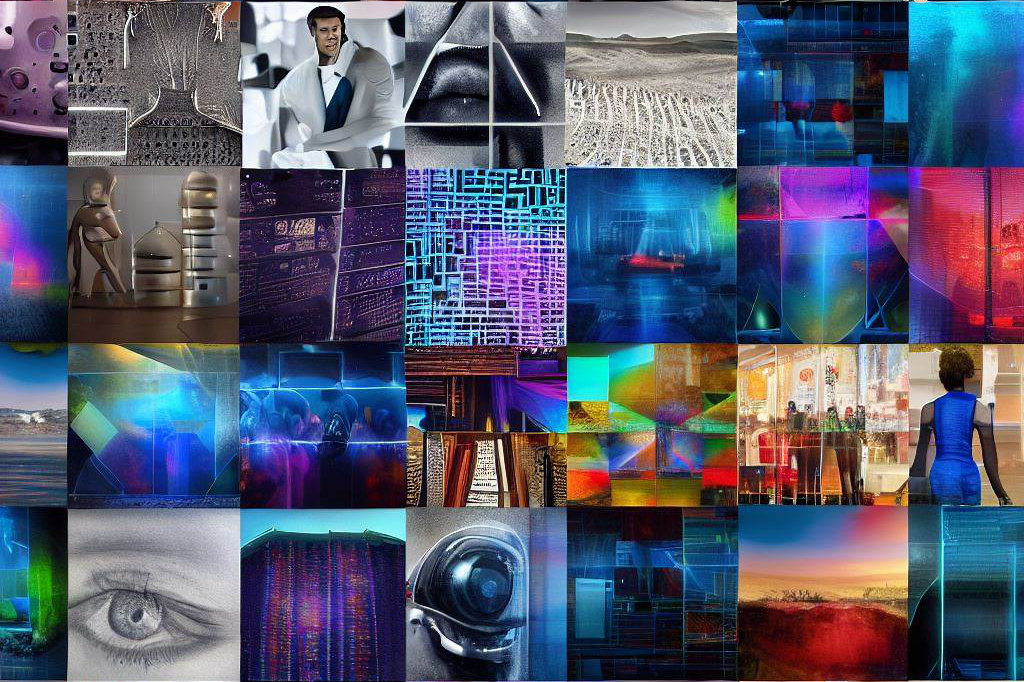
Computer Vision: The Power of Neural Networks for Object Detection and Image Segmentation
One of the most groundbreaking applications of deep learning is in computer vision. Thanks to neural networks, machines can now understand images and videos with remarkable accuracy.
Deep learning algorithms can detect objects in digital images, segment them accurately, and classify them based on their features. For example, a neural network can identify different species of animals or types of cars in an image.
The benefits of computer vision are numerous. It is being used to improve security cameras by identifying unusual behavior that may indicate criminal activity.
It can also be used to diagnose medical conditions from X-rays and CT scans with greater speed and accuracy than humans. In the future, we may see self-driving cars rely on computer vision to navigate complex environments safely.
Natural Language Processing: Enabling Machines to Understand Human Language
Deep learning has also revolutionized natural language processing (NLP), which is the study of how computers can understand human language and generate meaningful responses. With deep learning algorithms such as recurrent neural networks (RNNs) and transformers, machines can now recognize speech patterns with great accuracy, translate languages in real-time and even create human-like conversations. NLP has numerous applications across industries, such as healthcare, where it’s being used for predictive diagnosis; education where it’s helping students learn a new language; e-commerce where it’s improving search results for customers; finance where it’s streamlining customer service through chatbots.
Robotics: The Future is Autonomous
One of the most exciting areas of deep learning application is robotics. With breakthroughs in machine perception from sensors like cameras or LiDARs coupled with deep reinforcement learning (DRL), robots are increasingly able to perform intelligent actions autonomously without human intervention. Autonomous robots have enormous potential across a wide range of areas such as manufacturing, logistics, transportation, and healthcare.
For example, robots equipped with deep learning algorithms can recognize objects and navigate complex environments to aid in the manufacturing process or perform repairs. In the medical field, robots can help doctors in surgeries where precision is crucial.
As we continue to develop our understanding of neural networks and their capabilities, the future is looking bright for robotics. It won’t be long before machines are able to perform highly complex tasks that were previously only possible for humans.
Challenges and Limitations of Deep Learning
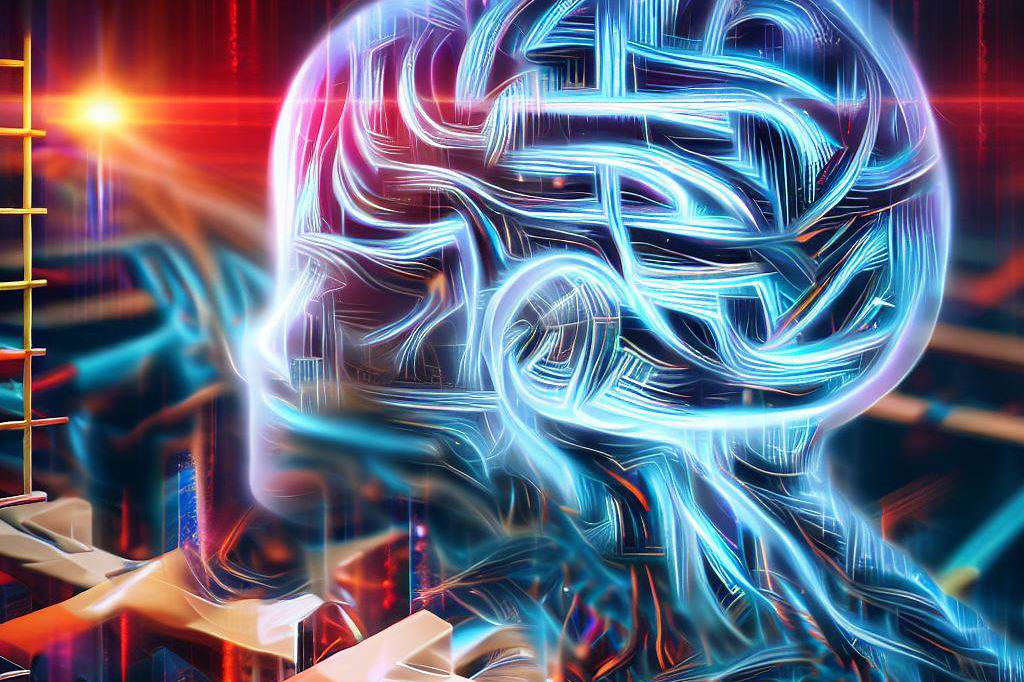
Deep learning has become an essential tool across many industries, but it is not without its challenges and limitations. In this section, we explore some of the most significant obstacles that researchers and practitioners face when working with deep learning models.
Overfitting
One of the biggest challenges facing deep learning is the problem of overfitting. Overfitting occurs when a model becomes too complex, and it begins to fit the training data too closely. As a result, the model becomes less able to generalize to new data that it has not seen before.
One way to address overfitting is through regularization techniques like dropout or weight decay. Dropout randomly drops out certain units in each layer during training, which helps prevent co-adaptation between neurons and reduces overfitting.
Weight decay adds a penalty term to the loss function during training, discouraging large weights that can lead to overfitting. These techniques can help reduce overfitting in deep learning models.
Lack of Interpretability
Another challenge facing deep learning is the lack of interpretability in these models. Deep neural networks are often called “black boxes” because it can be difficult or impossible for humans to understand how they produce their outputs.
Interpretability is crucial for many applications where decisions based on machine learning models need to be explained or justified, such as in medical diagnosis or financial forecasting. Researchers are actively exploring new methods for making deep learning more interpretable, including visualization techniques that allow researchers to see what individual neurons are doing within a network.
Need for Large Amounts of Data
One significant limitation of deep learning is its insatiable appetite for data. Deep neural networks require vast amounts of labeled data to train effectively and avoid overfitting.
While large datasets are readily available in some domains, such as image recognition, they may be much harder to come by in others. This makes it challenging for researchers to apply deep learning to new domains where labeled data is scarce.
Researchers are actively exploring ways to make deep learning models more data-efficient, including transfer learning techniques that allow models trained on one dataset to be adapted to another with fewer labeled examples. Despite these limitations, deep learning continues to be a powerful tool for solving complex problems in a wide range of fields.
Future Directions in Deep Learning Research

Deep learning has made significant strides in the past decade, with applications ranging from computer vision to natural language processing. However, there are still many challenges and limitations that researchers are actively working to address. In this section, we will explore two exciting areas of research that hold promise for the future of deep learning: explainable AI and reinforcement learning.
Explainable AI: Making Neural Networks More Transparent
As mentioned earlier, one of the biggest challenges in deep learning is the lack of interpretability. Neural networks are often referred to as “black boxes” because it can be difficult to understand how they arrive at their predictions.
This lack of transparency is a major obstacle for industries such as healthcare and finance, where it is important to provide explanations for decisions made by an AI system. Explainable AI seeks to make neural networks more transparent by providing insights into how they make decisions.
One approach is to develop techniques for visualizing the internal workings of a neural network, such as which features are being activated at different layers. Another approach involves designing models that explicitly incorporate human-like reasoning processes.
Reinforcement Learning: Training Machines Through Trial and Error
Reinforcement learning (RL) is a subfield of machine learning that focuses on training agents through trial-and-error interactions with their environment. RL has been successfully applied in domains such as game playing (such as AlphaGo), robotics control, and recommendation systems. In RL, an agent learns from experience by receiving rewards or punishments based on its actions in an environment.
The goal is for the agent to learn a policy that maximizes its cumulative reward over time. This differs from supervised learning, where a model learns from labeled examples provided by a human expert.
RL has shown great promise in applications such as autonomous driving and robotic manipulation tasks. However, there are still many open questions around how to design effective reward functions and how to ensure that agents behave safely and ethically.
Final Thoughts: The Future is Bright for Deep Learning

Advancements in Deep Learning Will Continue to Revolutionize Industries
The growth of deep learning technology has already had an immense impact on various industries, and its potential for future advancements is substantial.
In the field of healthcare, deep learning algorithms are being utilized for image recognition and analysis to diagnose diseases like cancer.
In finance, it’s being used to identify fraudulent activity and make investment decisions.
In the field of education, it’s being used to personalize course materials and enhance student learning.
As researchers continue to develop new techniques and applications for deep learning, we can expect even greater advancements in these fields and beyond.
The Rise of Explainable AI
One major obstacle facing deep learning technology is the lack of interpretability when it comes to decision-making processes. Researchers have been exploring methods for creating explainable AI systems that not only provide results but also explain how those results were achieved. This advancement will enable users of deep learning systems to better understand why certain decisions were made, which could lead to better trust in the technology as well as greater adoption in industries where transparency is a must.
With the continued development of new techniques and advancements in explainable AI, and collaborative research–we can expect even greater benefits from deep learning technology over the coming years. The future of deep learning is certainly bright!

C M, a seasoned editor, journalist, and consultant, is deeply fascinated by the convergence of technology, space, and the future of humanity.
With a particular interest in transhumanism, futurology, and the philosophical and ethical dimensions of these domains, C M serves as the lead contributor to TranscendSphere and SpaceSpotlight.
When not penning insightful articles on these rapidly evolving fields, C M indulges in their love for podcasts and books, proudly embracing their status as a ‘Happy Nerd Extraordinaire!’

